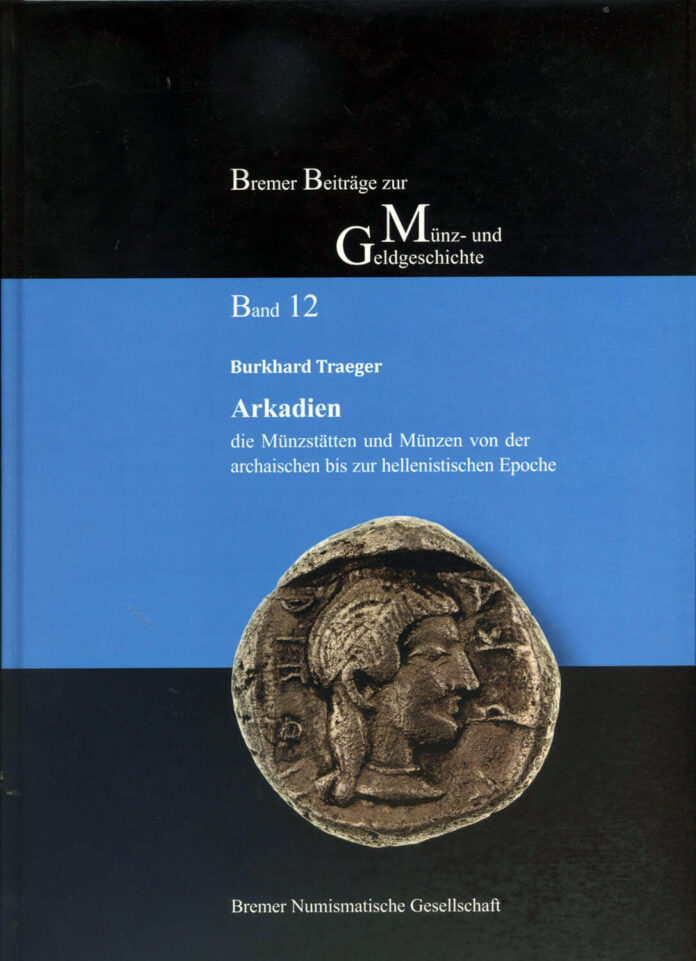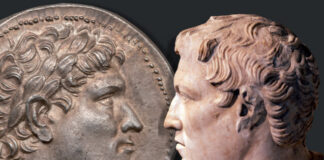
If you book one of the typical educational trips, you have no chance to get to know the Greek Arcadia. The mountainous landscape lacks classic highlights in the style of Olympia and Delphi, even though the first Greek monument to obtain the status of a UNESCO World Heritage Site, the temple of Bassae (which is difficult to reach by coach and has already been covered for decades), is located there.
That might be the reason why the coinage of Arcadia has not yet received the attention it deserves from numismatic literature. It is therefore all the more gratifying that Burkhard Traeger’s latest work is a comprehensive account of Arcadian cities and confederations that minted coins in antiquity.
The Author: Burkhard Traeger
Anyone who deals with Greek coins in Germany is familiar with Dr Burkhard Traeger. He is a collector – Crete, auctioned off at Künker in 2008 – and a knowledgeable author who always manages to combine a numismatic catalogue with the history of the issuing city, its culture and the architectural remains. His works are sought after among German-speaking editors as they are not only easy to read but also well-founded and regularly become reference works.
This is also true regarding his latest book, which was published in the series of the Bremer Beiträge zur Münz- und Geldgeschichte. In this work, he succeeded in taking collecting readers on an exciting journey to a region that the educated world has been talking about since the Renaissance without having seen it in person.
Where Is Arcadia?
The often quoted phrase “Et in Arcadia ego” does not refer to a geographical place but to a bucolic utopia where the corruptions of the modern world do not exist (or rather what was considered to be modern in the Baroque era). Therefore, for Goethe Arcadia was in Italy, and since then poets have been looking for it wherever they felt free and happy.
Burkhard Traeger, on the other hand, clearly defines the geographical area he wants to deal with: “Being the major province of the Peloponnese, Arcadia occupies the centre of the peninsula. Ancient Arcadia was larger than it is today. In the southwest, it included cities such as Alipheira and Phigaleia, which are now part of Elis. In the northwest Kleitor and Psophis were Arcadian, today they are considered to be part of Achaia. And in the north and the northeast, the areas of Pheneos, Stymphalus and Alea are now the western part of the province of Corinthia.”
This quote immediately tells us, why his works are so successful. The author masters the subject, he does not arbitrarily compile whatever he comes across but starts with a wealth of material and then decides which mints and confederations he wants to deal with in which way. For his work, he reconstructs the ancient borders of Arcadia and thus creates a historical understanding of the matter.
We Want More of Such Works!
What else is there to say? You probably understood by now that I like the book and find it very useful. Perhaps I can make a little suggestion: due to the incredibly long descriptions of the individual coins, it is a bit overwhelming to use the catalogue. Maybe it would be worthwhile to consider whether it might be sensible to summarise the descriptive phrases that are constantly repeated. After all, most of today’s readers will rather use the image than the description to identify their items anyway. But let’s be honest: this is criticism at the highest level because I simply cannot think of anything else to criticise.
Actually, there is one thing I would really like to see: that the author will delight us with as many of his contributions on Greek numismatics as possible. Every single one of them is a gain – for numismatics in general and for every reader.
You can order the book from Auktionen & Münzenhandel Dr Christoph Stadler for 49 euros.



